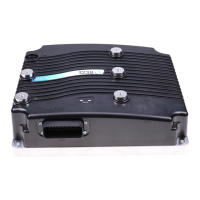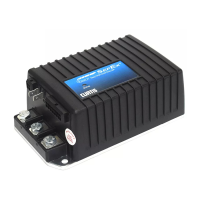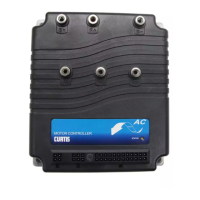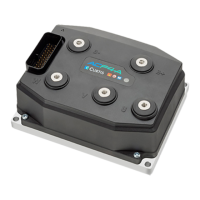Curtis PMC 1209B/1221B/1221C/1231C Manual
40
GLOSSARY
PWM
PWM (Pulse Width Modulation), also called “chopping,” is a technique that
switches battery voltage to the motor on and off very quickly, thereby controlling
the speed of the motor. Curtis PMC 1200 series controllers use high frequency
PWM—15 kHz—which permits silent, efficient operation. PWM is described in
more detail in Appendix B.
Smooth, stepless operation
Like all Curtis PMC 1200 Series controllers, 1209B/1221B and 1221C/1231C
models allow superior operator control of the vehicle’s drive motor speed. The
amount of current delivered to the motor is set by varying the “on” time (duty
cycle) of the controller’s power MOSFET transistors. This technique—pulse
width modulation (PWM)—permits silent, stepless operation.
Temperature compensation
Internal temperature compensation ensures that the controller’s current limit
remains constant over varying controller temperatures. This eliminates perfor-
mance variations resulting from variations in controller operating environment
temperatures.
Thermal protection
Because of their efficiency and thermal design, Curtis PMC controllers should
barely get warm in normal operation. Overheating can occur, however, if the
controller is undersized for its application or otherwise overloaded. If the internal
temperature of the 1209B, 1221B, and 1221C controllers exceeds 75°C (167°F),
the main and plug current limits decrease steadily until they are reduced to zero
at 95°C (200°F). Thermal cutback for the 1231C controller begins at 85°C
(185°F). At the reduced performance level, the vehicle can be maneuvered out of
the way and parked. The controller shifts frequency during overtemperature from
its normal 15 kHz to 1 kHz (“B” models) or 1.5 kHz (“C” models), providing an
audible tone alerting the operator to the overtemperature. (NOTE: The plug
current limit can be made independent of temperature. This ensures full braking
capability even in overtemperature conditions. However, it may result in prema-
ture plug diode failure due to excessive thermal stresses.)
Full current limit and performance return automatically after the controller
cools down. Although this action is not damaging to the controller, it does
suggest a mismatch. If thermal cutback occurs often in normal vehicle operation,
the controller is probably undersized for the application and a higher current
model should be used.
The controller is similarly protected from undertemperature. Should its
internal temperature fall below -25°C (-13°F), the current limit decreases to
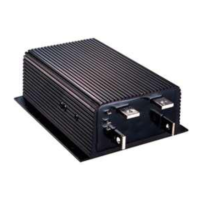
